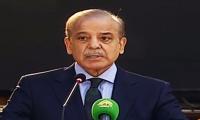As Pakistan joins the IMF programme for the 13th time, to get $6 billion over a period of three years to stabilize its shattered economy, there has been a lot of discussion focusing on the IMF conditionalities and their consequences for Pakistan’s economy.
Already, before the formal start of the programme, people are facing the consequences in the form of soaring inflation, increase in taxes, cut in government spending and increase in oil and gas prices (gas has increased by 190 percent and electrify will be hiked to Rs2.5 per unit from the next month) and the last but not least the market-determined value of the rupee.
Devaluation of the rupee and increase in taxes have given unprecedented rise to inflation which at the moment stands at 9.4 percent, and at the end of the year will hike to 13 percent and next year will be soaring to 20 percent. As inflation has been triggered by new taxes, Pakistan has promised to increase the FBR’s total tax collection from Rs3.94tr last year to Rs5.5tr this year and to Rs10.5tr by 2023-24, a cumulative increase of Rs6.564tr in five years. As such the tax-to-GDP ratio will soar to 15.3 percent from 10.4 percent this year. The increase in the tax is being resisted by businesses, employees and common people.
The other factor that is responsible for inflation is the unprecedented devaluation of the rupee against dollar. When Imran Khan took over as premier of the country, the dollar was at Rs128 but now it is at around Rs160. The reason for the drop in the value of the rupee said to be the outcome of political indecisiveness and the agreement with the IMF that the market will determine the value of the dollar; this is being opposed by the business community as it seeks government intervention to stabilize the dollar, otherwise Pakistan’s businesses suffer a great deal.
In light of the tightened monetary and fiscal policies under IMF conditions, a very bleak economic scenario is being depicted. According to Fitch, a US-based global research house, Pakistan’s real GDP growth for FY2018-19 and FY19-20 will be at 3.2 percent and 2.7 percent respectively. Obviously, the reason for low growth is said to be the strict IMF conditionalities due to the bumpy relationship between Islamabad and the IMF. The IMF considers Pakistan a country with deviant behaviour, often failing to complete its programmes.
Consequently, this time around Pakistan faces harsh conditions of strict financial discipline. Most of the countries joining the IMF refuse to accept such strict conditions as they want to have autonomy in decision-making pertaining to financial matters. Even a small African country like Botswana opted for independent advisers from public institutions and private foundation when it joined the IMF for structural facilities from 1961 to 1997. Sadly, our current government has found it difficult to resist the harsh and anti-people conditions of IMF.
The IMF Executive Board has formally approved the programme and released $1.65 billion. The government expects the IMF financial package to help stabilize the rupee against the dollar, and spur growth. I have the opposite view as empirical studies show that IMF programmes create more economic and financial political instability because of their anti-poor and pro-rich nature. The problem with the IMF programme is that it is loaded with the ideology of the free market. There is nothing wrong with free market ideology but it works well where people have strong demand to which market responds with supply.
But here in Pakistan 80 percent of the population lives on $2 dollars a day, on which basis it cannot make any demand and which is why it always looks towards the state for health, education and subsidies on food, oil, gas and essential utilities of daily life. But this role of the state is being scuttled under the IMF programme. PM Imran Khan often speaks of the welfare state of Medina but such IMF programmes trim the welfare role of the state and create an economy with a strong market and weak state.
Apparently, the staff agreement signed between the IMF and the government of Pakistan states that it would promote economic stability and growth. I think that is mere myth. The reality is totally different; IMF programmes produce more negative effects on the economy with appalling social consequences. To dig out and understand the reality, we need to look into the conditions that changed the IMF’s role from bailing out countries and people to bailing out bankers.
The 1970s and 80s witnessed an economic recession following an increase in oil prices due to the oil embargo of 1973 and 1979. Developing countries faced the liquidity crunch as they had to pay more for oil imports. Oil-producing countries flushed with cash after an increase in oil prices invested their money with international banks which was recycled to Latin American governments on high interest rates as loan under the Brady Plan 1989. In the meantime, the US increased interests rates, due to which debt payments also increased, making it harder for the debt-ridden Latin American countries to pay back their debts. Depreciation of the local currencies against the dollar made things worse as it increased the amount of debt and lowered the purchasing power. The contraction of world trade in 1981 had already caused the prices of primary resources to fall
So, in the face of mounting debt, Mexico and Brazil were not able to serve their debts and unilaterally declared a 90-day moratorium and requested renegotiation of payments. Default on their part posed a direct threat to the global financial system to collapse. To prevent the system from collapse, the Washington Consensus (consensus among the Washington-based three institutions – the US Treasury, IMF and World Bank) emerged as a response to tackle the threat. Under the Washington Consensus, the mandate of the IMF was changed and new loans with strict conditions were provided in return for reforms. The IMF forced loan-seeking countries to adopt free-market capitalism; reduce government spending; increase taxes; private-public enterprises; liberalize the economy and allow capital account liberalization and devalue dcurrency. Briefly, the purpose was extraction of money through debt payments.
The effects of IMF programmes were very grave: Income and imports dropped, economic growth stagnated, unemployment rose high, inflation soared – reducing the purchasing power of middle classes – and real wage dropped between 20 and 40 percent. The investment and revenue generated from new taxes were used to pay back the debt instead of addressing social issues. Austerity programmes lowered government spending and further deteriorated social fractures in a society with aggravating inequalities and poverty conditions. All these developments caused intense anger towards the IMF amongst the people.
The whole purpose of the IMF programme in Mexico and Brazil was to extract wealth and transfer that wealth to international private banks in the form of debt payments.
Going to the IMF for stabilization of the economy Has led to an increase in taxes, gas and electricity bills and inflation, which has made the lives of common people even more miserable. It is time for government to look for alternative ways and means to address the economic ills country is facing and find a proper treatment. While referring to the prescription by the IMF for ailing economies like Pakistan, Joseph Stiglitz describes the IMF shock therapy as a “cure worse than disease as people suffer more under IMF conditionalities than no conditionality. Mexico was an example. Prior to the 1982 debt crisis, Mexico enjoyed a period of economic stability.
The writer works as professor in thedepartment of management sciences at SZABIST, Karachi.
Email: isran@szanist.edu.pk
A worker fixes a flag of the ruling Bharatiya Janata Party on a hoarding of their leader and India’s Prime Minister...
Prime Minister Shehbaz Sharif and Foreign Minister Ishaq Dar address a press conference in Lahore. — AFP/FileWhen...
Koohi Goth Women Hospital in Malir Karachi. — Facebook/koohigoth1A majority of poor women in Pakistan have a faint...
This image shows Pakistan's Ayesha Rashid, who was recently given the heart of a 69-year-old brain-dead Indian patient...
A car is seen burning along a road as Pakistan Tehreek-e-Insaf party activists and supporters of former prime...
Students of the Church Mission School, located in the heart of Karachi’s old city area, brief a judge about the...







